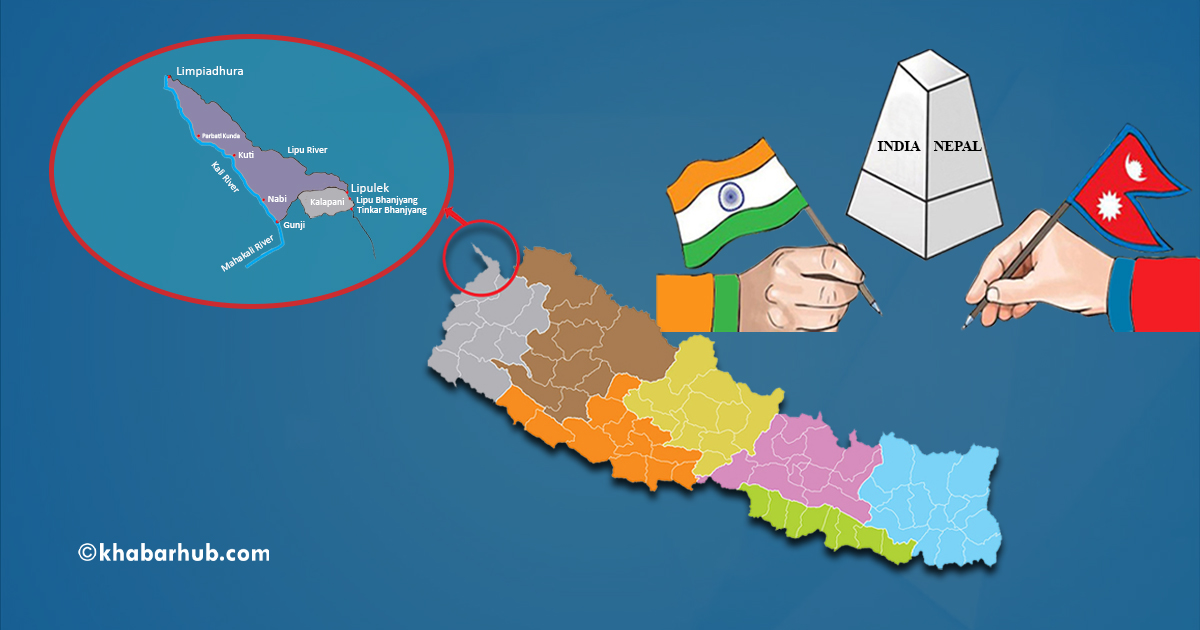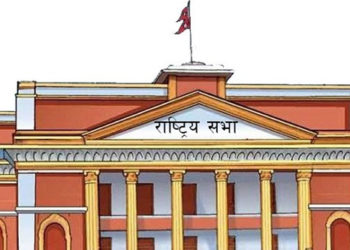When the recent alteration in the political map of India was published on 31 October 2019 indicating two newly formed Union Territories – Jammu and Kashmir, and Ladakh, the long-standing controversial border issue between Nepal-India came to the spotlight and sparked a sudden momentum in Nepal over the Kalapani issue.
Whether the border is natural or artificial, clear or blurry, it is an identity marker and creates loyalties within its territory.
Therefore, nationalist fervor for one’s own stable territory and the border has been the reigning issue in the history of world politics.
Evolution of Kalapani – a Bone of Bilateral Contention
Spanning 35 square kilometer area in length and controlled by the Indo-Tibetan Border Police in the Uttarakhand’s Pithoragarh district, ever since 1962, Kalapani is the area from which the Mahakali aka the Kali River flows.
Nepal argues that the new map has taken away Kalapani despite India’s External Affairs Spokesperson Raveesh Kumar at a press conference stated, “Our map accurately depicts the sovereign territory of India. The new map has in no manner revised our boundary with Nepal”.
Since this river enters India’s Uttarakhand state, the river is of both India and Nepal’s interest.
Besides, Kalapani is a tri-junction, that is, a meeting point of Indian, Chinese and Nepalese borders. Since there is no clarity over Kalapani and its demarcation, and from where the Mahakali River originates separating Nepal’s north-western border from India, the area is a sore point in the India-Nepal relations.
Nepal argues that the new map has taken away Kalapani despite India’s External Affairs Spokesperson Raveesh Kumar at a press conference stated, “Our map accurately depicts the sovereign territory of India. The new map has in no manner revised our boundary with Nepal”.
Notwithstanding the official statement from New Delhi, and in response to the mounting territorial nationalism of students, Nepalese Prime Minister Khadga Prasad Sharma Oli asked India to withdraw its army from Kalapani.
The historical account of the Kalapani signifies that a Treaty of Sugauli signed in 1816 between the British Indian government and Gurkha chiefs of Nepal after the end of the Anglo-Nepalese War (1814-1816) denoted Mahakali as the western border of Nepal.
From historical records, hydrological facts, and old maps, Nepal opines that Mahakali River originates from its own state (especially Limpiyadhura).
Most maps published from 1816 to 1880 that Nepal has been successful in presenting have maintained the same position – Mahakali River originated from Limpiyadhura.
In other words, “peace” must become both the means and the goal for India-Nepal relations. And, stability in friendship will mark an environment of security in the South Asian region which is the need of the hour.
Likewise, India has presented its tax records and other administrative documents of the 1830s that tell Kalapani is part of the Pithoragarh district of Uttarakhand. Indian experts claim that there is even a map from 1879 which India claims is proof of Kalapani being part of the British Indian territory.
On the contrary, Nepalese experts claim that the maps published by the then British Survey of India in 1827 and 1856 clearly show how these areas have been accepted as part of Nepal. Limpiyadhura in the north-western corner of Nepal has been accepted as the origin of the Mahakali River as per Article 5 of the Sugauli Treaty of 1816.
On the one hand, political experts in India argue that the challenge lies only in competing perspectives on boundary alignment, and India is open to dialogue for settlement. India has time and again explained that the shifting course of Mahakali River is making Nepalese citizens claim a segment of land.
The contemporary development which gave birth to a political controversy is the 1996 Treaty of Mahakali signed between India and Nepal.
For resolution, a Joint Technical Boundary Committee in 1981 was formed which was able to settle about 97 percent of the border discrepancy.
What remains in question and has become a bone of contention is the leftover unsettled border of Kalipani and few others.
In this changed context, where India is big in size, any small encroachment on small friendly neighbor Nepal can come up with fury in more emotional than analytical manner.
Nepal, being geostrategically located between India and China, has been noted on several accounts to argue that the reason India has installed Indo-Tibetan Forces in the region is to watch like a hawk over any suspicious Chinese movements.
Some scholars in Nepal argue that Nepal allowed Indian troops to station at Kalapani after the 1962 Sino-Indian War to safeguard its territory, but Indians continued to hold it. King Mahendra attempted to send those Indian troops in 1969 but he passed away.
Is Aggressive Nationalism in India’s Favour?
The claims and counterclaims over Kalapani are for border experts and the government of two countries. They should immediately set up the task force to explore the facts and resolve the dispute amicably.
At a time when China’s rapprochement in the region does not seem to decrease, India cannot afford to slacken its regional activism and has to call for speedy solutions to bilateral issues with the small states.
More so, when India sees China as a threat and wishes to counterbalance, the solutions must be structured around the concept of “peaceful development” and not confrontation.
Kalapani, being the trijuncture of India, China and Nepal, it is not free from the politics meted out from the Chinese front.
For instance, the Deputy Director-General of the Boundary and Ocean Affairs of China’s Ministry of Foreign Affairs, Wang Wenli, at a press conference during the military standoff at Doklam stated that China demanded India to pull-out its troops from the Doklam plateau, and threatened India by arguing that “The Indian side has also many tri-junctions. What if we (China)… enter the Kalapani region between China, India and Nepal or even into the Kashmir region between India and Pakistan”.
In this changed context, where India is big in size, any small encroachment on small friendly neighbor Nepal can come up with fury in more emotional than analytical manner.
Similarly, Nepal must also use caution as internationalizing issues will only invite counterproductive effects. A country with which India has an open border policy facilitating free movement of people across the border, prolonged anger against India will encourage anti-social activities like smuggling, faking currency and terrorism.
Hence, it is in mutual interest to resolve it through dialogue as soon as possible. Nepal is a landlocked country with India as the largest trading partner.
Similarly, current Nepal is in a position to counterbalance India with China, with whom it has signed a number of trade and transit agreements. Thus, both should not undermine the current realities.
Conclusion
At the time when China has resolved its ‘land border’ with all its neighbors, debarring Bhutan and India, India having border disputes with many of its neighbor do not fit in its ambition to rise as a regional and global power.
Unless India aces good relations with its next-door neighbors alongside moving ahead on other frontiers, such as culture, people-to-people contact, trade and economics, rising in strategic relations with the neighbors cannot be strong.
India needs to strengthen its cooperative mechanisms and dialogue to address the fundamental issues that it faces with Nepal.
In other words, “peace” must become both the means and the goal for India-Nepal relations. And, stability in friendship will mark an environment of security in the South Asian region which is the need of the hour.
(Dr. Aditi Paul is Research Associate at NIICE. Views expressed in the article are those of the author.)
(Nepal Institute for International Cooperation and Engagement (NIICE), Nepal’s independent think tank, and Khabarhub — Nepal’s popular news portal — have joined hands to disseminate NIICE research articles from Nepal)









Comment